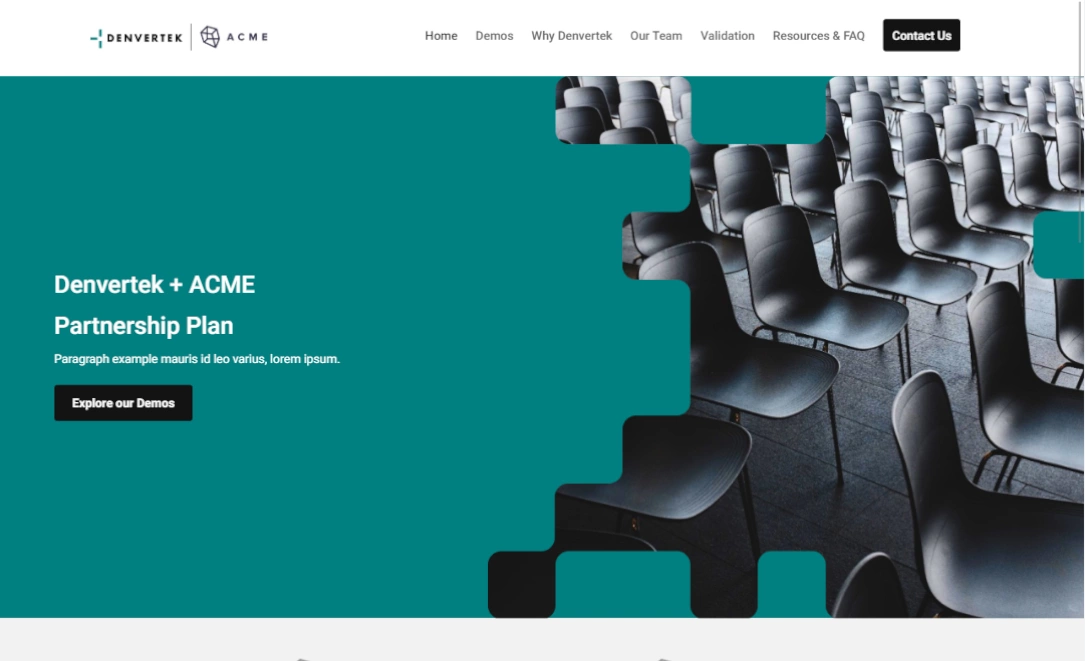Sales enablement is a slippery concept. It takes many shapes and can mean different things depending on who you are and what industry you’re in. It can be a concept, strategy, culture, tool, team, and more. There’s one constant in sales enablement, though: identifying ways to improve sales revenue. The very fabric of sales enablement involves weaving together strategies and initiatives to make an impact on your sales enablement KPIs.
Sales enablement strategies must start with identifying the performance metrics you can improve to increase revenue: sales activity, conversion rate, and average deal value. A well-constructed sales enablement plan should tackle these metrics. This article will cover 5 strategies you can use to boost your sales enablement KPIs!
Sales enablement metrics you should improve
Revamping your sales enablement strategy will involve a holistic approach to understanding the layers of your operation’s sales process. This includes considering your sales activity, conversion rates, and average deal size. Improving any of these three metrics will translate to higher sales revenue.
Who would have thought it could be so easy?
Elevating sales activity with sales enablement tactics for business growth
Sales activity is a primary metric you will track to understand the relationship you have with your customers. It refers to the interactions you share in the form of meetings, demos, follow-ups, or presentations.
Sales activity is a primary metric to measure because it often addresses the first steps toward closing a sale. When your sales activity is low, it makes it impossible to convert high volumes of leads, ultimately leaving you dependent on extremely high-value deals for high-profit margins.
Sales activity rates suffer when prospects are hard to find or stay in contact with, or if prospects you are in contact with are not interested in client-facing meetings or communication.
If you want to increase the rate of your sales activity as part of your sales enablement tactics, try:
- Expanding your lead generation sources by embracing new processes and tools
- Adjusting your marketing strategies by elevating your campaign content and delivery methods, such as with a microsite
- Assessing your sales enablement team—do you have enough SDRs on your team to prospect and qualify leads?
- Incentivizing leads with better offers and unique value propositions
Optimizing conversion rates as a critical sales enablement KPI for success
Being a part of a sales meeting only means something if it leads to conversion, ideally in a reasonable time frame.
This metric says a lot about the efficacy of your sales enablement initiatives, sales team, marketing initiatives, or the value props that your brand showcases. It’s a number that helps sales and marketing teams align their strategies. This KPI alone can reveal what your return on investment is for your lead generation tools, marketing campaigns, and sales development initiatives.
Conversion rates should reflect a healthy number of client-facing actions turning into profitable sales. But, conversion should also be measured by how long it takes to convert a lead into a sale from start to finish. This reveals the quality of the leads your team has access to.
If your conversion rates are suffering, try to:
- Share compelling, information-rich content that keeps your leads engaged
- Assess the composition of your sales team—do you have enough AEs on hand to help your team convert leads and close?
- Create flexibility, discounts, or pricing models that entice your leads
Amplifying average deal value to achieve sales enablement goal
While your sales enablement team chips away at prospective clients, you can ensure that they see a high return on their efforts in the form of deal value.
Your average deal value is the final component in calculating your sales revenue. It’s a very straightforward metric to assess but can have a significant impact on the remainder of your sales strategy.
The goal is to increase the value of each sale at the start of your relationship. This may come in the form of add-ons, upgrades, or packages you offer. Another way to increase average deal value is by looking at the length of the contract or purchasing terms. Onboarding new clients for a two-year contract guarantees higher profitability than a month-to-month relationship.
While this may not be an easy fix, some of these sales enablement strategies can help you supercharge your average deal value:
- Create flexible pricing models that incentivize bundles and add-ons
- Drive your value proposition and unique niches in your marketing content
- Upsell additional services you offer during client-facing meetings
5 sales enablement strategies to integrate into your business
Leveraging data in your sales enablement strategies
Having access to holistic, rounded data lays the groundwork for identifying and improving sales activity, conversion rates, and average deal value. Data should be the driving force behind the decision-making process, especially when it comes to making decisions about strategy.
The more data you collect, the better. You should collect it from a range of sources, including your CRM and customer-facing deliverables, like a microsite.
You should use data regarding conversion rates to help you make sense of pre-sale and post-sale analytics. These metrics will help you identify which KPIs need to be revisited. Other metrics, like analytics regarding customer engagement, can lend insight to your marketing team, too. It helps teams pinpoint gaps in client experiences and necessary areas to follow up on. Insight, above anything, can help you see growth in your sales team and your enablement strategy.
Enhancing lead generation to boost sales enablement objectives
Half of the struggle with sales is finding viable leads. As with any sound solution, addressing this problem should take on a robust approach that hits the nail on the head from multiple angles.
Avoid putting all of your eggs in one basket and opt for a strategy that diversifies your lead sources. Diversification can mean anything from expanding your lead portfolio to incorporating several marketing strategies. If you focus heavily on generating leads from email marketing, try incorporating social media lead sources.
Improving your lead generation processes is dependent on your sales team and the tools they use. You can assist your team by bringing on a lead generation expert to conduct training. Use lead generation tools that automate follow-ups with potential leads—speed to lead is vital.
Upgrading content and delivery methods in sales enablement communications
It’s nearly impossible to talk about improving lead generation without considering the content that is being used to capture leads. The content you’re delivering and the information it contains matter most, but how you’re delivering it is just as important.
The way we receive and consume content has changed drastically in the last decade, and it’s high time your approach does too. The bells and whistles of shiny tech-based deliverables have started to rust, and the allure of a generically produced website may not cut it anymore.
Upgrade your content to create a highly immersive experience and customized content experience. It not only makes it more likely that your audience will engage with what you are offering, but it can make them 83% more likely to share data, especially if it enables a personalized experience.
Microsites are the perfect way to do this. Unlike traditional marketing strategies that often have to choose between engaging content and information-rich content, microsites allow you to have the best of both worlds.
They’re incredibly easy to design, too. The right microsite builder, like Zoomforth, will even offer templates that make it possible for anyone (yes, even those of us with no coding experience) to hit the ground running and get a site up in a matter of hours.
Best of all, these sites can be as personalized as you want them to be. The branding, color schemes, and content can all be swapped as often as you like.
Empowering your sales enablement team for peak performance
It would be too obvious to say that putting together a sales team that can demonstrate client, product, and service awareness is important. But, what may be less obvious is that this awareness accounts for nearly 41% of a client’s buying decision. Even less obvious is the work that goes into cultivating your team of experts. It’s an involved process, but it’s one undeniable worth investing in.
Getting a foot in the door isn’t enough, but you likely already know this if you notice that meetings aren’t converting into sales or that deals take too long to close. Helping your conversion rates grow means watering the soil your sales team is standing on.
Ensure you have a team of dedicated sales development representatives (SDRs) and account executives (AEs) on hand. You can vet these folks from your team, as you likely have a few MVPs who are extremely familiar with qualifying leads and closing deals. Experience can make a huge difference in performance, so sharing knowledge is always a plus!
You should also consider enlisting the help of experts. They’ll offer insights about bottlenecks, pain points, and value props that set you apart from industry competitors.
Developing irrefusable offers to strengthen your sales enablement plan
One of the factors that affect your bottom line the most is your price point. Not only this, but it may also have an impact on your conversion rates, especially as it can speed up or slow down the amount of time you spend in talks with clients.
Keeping your clients happy with your price point may take some finesse, but it is doable. Here are some ways you can repackage what you’re selling to drive up your average deal size:
- Add flexibility to your pricing model: Create packages, bundles, or tiered services to your pricing model so that clients can pick and choose. It avoids an “all or nothing” idea about the services you offer, and may even motivate them to try additional services they may not have tried otherwise.
- Showcase your value adds: Don’t forget to market your niche! Show your client what you are worth by upselling what sets you apart from industry competitors. It makes you seem like an investment.
- Create incentives: Who doesn’t love a deal? You can entice new clients with limited offers to give them a taste of what you offer. This is also a great way to keep loyal customers happy and may lead to referrals.
Zoomforth is here to help bolster your sales enablement strategy
Sales enablement doesn’t need to be as complicated as resources online would suggest. Calculate your performance, identify pain points in these metrics, and work to improve them with different strategies. If your content delivery has gone stale, it might be time to improve it with the right tool.
Ready to elevate your approach to sales enablement? Try a risk-free demo of Zoomforth’s intuitive microsite platform. It’s the perfect way to start working toward boosting your conversion and activity rates so your team can see higher revenue.
Photo by aymane jdidi on Pixabay



